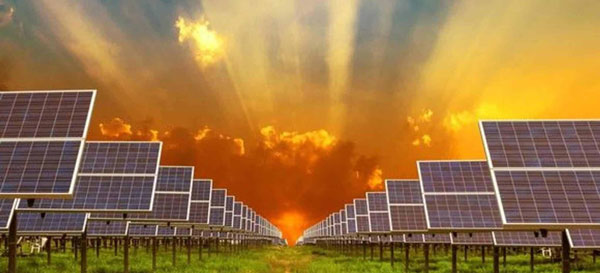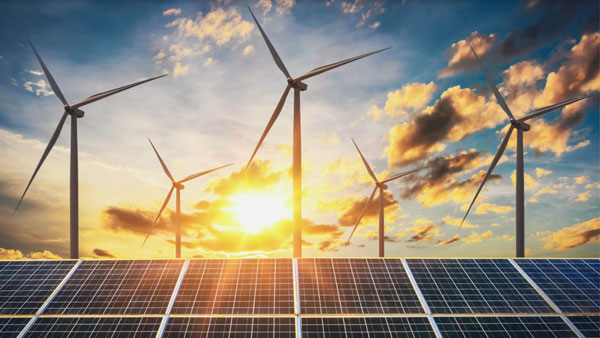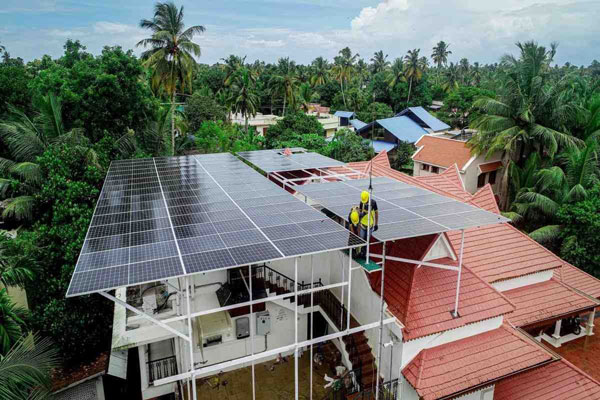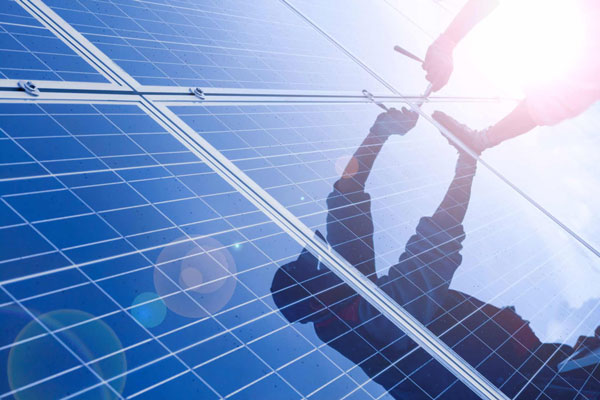Conducting an Energy Audit
The first step to start incorporating solar energy into your home or business is to undergo a complete energy audit. This step-by-step evaluation process will determine how much energy you are currently using and how much of it you can replace with solar power. A professional auditor will use tools such as blower doors to measure heat loss and infrared cameras to detect inefficient areas.

Understanding Your Consumption
The first thing to do would be to evaluate the utility bills from the last year and understand how much it had fluctuated. This should give you an indication when your highest consumption occurs and how to size the solar system accordingly. On average, an American home consumes approx. 877 kWh per month. If your usage is much higher than that, you will qualify for a larger system.
Evaluating the Solar Power
To calculate how much sun energy can be harvested, you should take into account the physical location of your property. The PVWatts Calculator provided by the National Renewable Energy Laboratory gives a rough idea of how much your system will produce based on where you live and how your roof is oriented.
Is Your Roof Suitable
First, it is important to understand that not all roofs qualify for panel installation. Mostly it depends on the age, shading, and orientation. Ideally, a roof should have south orientation with no shading from trees and buildings at the tilt of 30 degrees. If all those criteria are met, it is possible to cover around 600 square feet of a typical American household roof.
How Much Will It Cost
Naturally, calculating the price of the system and how much you will save overall is essential. On average, a solar panel installation might cost you around $15,000 or $25,000 after tax credit. At the same time, given that most people pay $0.13 to $0.23 per kWh, one will average savings by around $1,500 annually. This means your solar panels should pay themselves off in somewhere between 10 and 15 years.
Finding the Right Panels
Finally, the selection of the proper panels to achieve maximum efficiency is vital. Most commonly there are three types of those panels – monocrystalline, polycrystalline, and thin-film – all of which have different efficiency and price. For instance, monocrystalline panels are the most effective, also costing significantly more, and therefore best suited for a limited roof space. The installation process usually includes obtaining proper permissions, grid approval, and the installation itself. Usually, experienced workers will spend no more than a few days making sure every part is placed securely and oriented properly. Post-installation usually involves connecting your new system to the grid.
Choosing the Right System Size
Choosing the correct size for your solar panel system is essential for both cost efficiency and maximum output. The process includes calculating your current and future energy needs in order to determine if the solar system will deliver enough power.
Calculate Current Energy Needs
Check your last few utility bills: how many kilowatt-hours do you and your household members consume on average per month? If your approximation would be around, for example, 900 kWh, and you want to cover at least 80% of it with solar power, your best bet will be a 720 kWh system.
Consider Future Energy Usage
Make a prediction of how your electricity usage may potentially rise with the purchase of a new electric vehicle, the installation of a swimming pool, air conditioning system, or house extension. This may save you from having to upgrade the system you have after a few years of use – for example, consider that an EV requires at least 30 kWh per every hundred miles the vehicle covers.
Count the Sunlight
Your location will determine the amount of sunlight you get: generally, it will be from 4 to 6.5 hours. A good map can help you calculate more precisely. For example, in Arizona, the usual figure is around 7-7.5 hours of sunlight in a day, while in New England, it will only be around 4.2 hours per day.
Use Solar Panel Output Efficiency
On average, solar panels turn 15% to 20% of sunlight energy into power. By choosing a high-efficiency 22% panel for your roof, you can get more power from the same area. If you want to produce, say, 300 watts with each panel, a system with lower efficiency will require more panels. For example, a 300-watt panel with 15% efficiency will need another panel similar to it to enjoy a similar level of generation. In this case, you should choose the better alternative.
System Sizing Example
If you need 720 kWh per month and live in an area with 5 sun hours, and you select 300-watt panels with 18% efficiency, then you should calculate the number of panels:
-
Daily energy requirement: / 30 = 24 kWh / day
-
Daily generation per panel = * 5 * 0.18 = 270 watt-hours or 0.27 kWh
-
Total panels = 24 kWh / 0.27 kWh per panel ≈ 89 panels

Finding Financing Options
Many homeowners and businesses experience a barrier to entry for solar panel installation transition due to a lack of funding. Therefore, whether you are looking to install solar panels at home or work, financing these projects is an excellent way to ease the burden of solar energy. Through such financing methods, you can continue to enjoy the benefits of a sufficient and environmentally-friendly energy supply. Different types of solar panel financing are suitable for different financial arrangements:
Solar loans
Solar loans are similar to home improvement loans and one of the most popular options in financing solar panels. Here, an economic does a full-finance of the solar system where you can, later on, pay a fixed amount over a stipulated time. For instance, you can get a $20,000 solar loan at 4% over 15 years at a rate of $144 monthly payments. These loans tend to have varying interest rates, from over 0% to about 6%. Solar loans depend on your credit score and the lender, with the number of years used to finance the system ranging from 5-20 years.
Leases and Power Purchase Agreements
With this type of financing, the homeowner does not own the solar panels. Meaning, he/she borrows the panels from the provider, who also install them on the user’s property to generate electricity. The provider, in turn, charges a fixed monthly fee of payment as a lease, or the electricity kWh produced. Most of this rate is always cheaper than the electrical systems charge by the use. The advantage of leases and PPAs is that it does not require high initial outlay. However, it does not capture the leverage of federal and state tax incentives available.
Government incentives
Government incentives could significantly affect your budget; thus, they play a huge part. Here, the ITC provides a federal investment of 26% off the total cost of the system of the system. Moreover, various states can offer different incentives, such as tax breaks. Thus, understanding this information could help with your budget. For instance, California’s Self-Generation Incentive Program provide rebates to customers installing new energy systems that are solar or paired with solar.
Installing the System
The actual installation of a solar panel system is the vital phase, which requires careful coordination and skillful execution. The understanding of each step can make the process less mysterious and reveal a need for a qualified installer.
Selection of a Qualified Installer
The components and most of the inverter used in the solar panel systems are built to last 25 years or longer. However, having a certified and experienced solar installer is crucial. The qualification of a chosen installer can be verified by checking their certification by the North American Board of Certified Energy Practitioners . The experienced company will not only make sure that a solar panel installation will comply with local building codes but maximize the system’s efficiency. For example, choosing an installer with 5+ years of experience and over 100 installations will provide an additional layer of security of the systems’ reliability.
Site Assessment and System Design
The installer will assess the site and check the condition of the roof, shading from trees or other structures, and the orientation of your house. The data obtained in the results of the assessment will be used to design the solar panel layout that works best for sunlight exposure. It includes the use of the solar pathfinder or LiDAR technology and the creation of a 3D model of your site to see how much energy can be actually produced. The simulation will help to arrange a photovoltaic array in the most efficient manner.
Permitting
Before any installation activity star, you have to make sure you have obtained all the necessary permits. The installer will file the drawings and plans for the solar panel system with the local building department. The initial permitting will ensure that the installation will be conducted in compliance with local, state, and federal regulations, and last for a couple of days to several weeks.
Installation of the System
The first days or a week will be spent on the actual physical installation of the system. The duration of the process depends on the size of the QAQC ofth and the requirement of the system. Inverters and other balance-of focused responsibilites of the system will be connected and mounted to the racking. Other products include panel mounting on racking and interconnection. Key points are to make sure the panels are angled toward the sun and the mounting is secure. The installation of the inverter can convert solar panel direct current to usable alternating current.
Post-Installation Care and Monitoring
Following the installation of your solar panel system, maintaining its longevity and optimal performance includes regular maintenance as well as continuous monitoring. This conservatory approach will help in detecting potential issues early, preventing extensive damage and expensive repairs.
Routine Maintenance
Solar panel maintenance typically requires cleaning and visual inspection on a semi-annual basis. To be more precise, dirt, debris, leaves, and other types of residues should be removed from the solar panels every six months. Moreover, cleaning is necessary to remove bird droppings and ridge is that can block sunlight. Overall, allowing dirt to accumulate on the surface of the photovoltaic cells can reduce their efficiency by 5% to 10%. Meanwhile, regular examination of the panels can help in determining whether or not they become dirty. Moreover, look out for cracks or any discoloration of the panels, which are signs of potential issues. Finally, monitor your solar panels for the water that could be pooling around them.
System Monitoring
In addition, you probably already have monitoring technology installed in your system. It has been integrated into nearly every modern solar setup, and it is now the resident’s big selling point. The inverter system allows you to monitor how much energy your solar panels produce and how much of that energy your home uses in real time. Thus, this monitoring technology can alert you if your output has been raised or lowered by tens of kilowatts. For instance, if you typically produce 50 kilowatts per day and your system has dropped to 30 kilowatts in a single day, it indicates an issue with the panels or the inverter.
Professional Inspections
Be sure to schedule a yearly check-up by hiring a certified technician. These individuals can make sure that all of the electrical components and interconnections are safe and functioning properly. Meanwhile, some professionals employ more sophisticated tools, such as infrared scans, to determine potential issues in the hidden assembly. These include high resistance points, or “hot spots,” or even a malfunction in the panel all together.
Warranty and Service Agreements
Finalize the warranty and take advantage of a service agreement offer. Both of these are standard offers from almost all solar providers on the market. In fact, nearly every solar panel comes with a 25-year performance warranty, while the inverter has a warranty of about 10 to 15 years. Meanwhile, others will offer service agreements, which include not only regular maintenance but also repairs. You should choose these offers to maximize the benefits of your solar system and minimize the potential costs.



